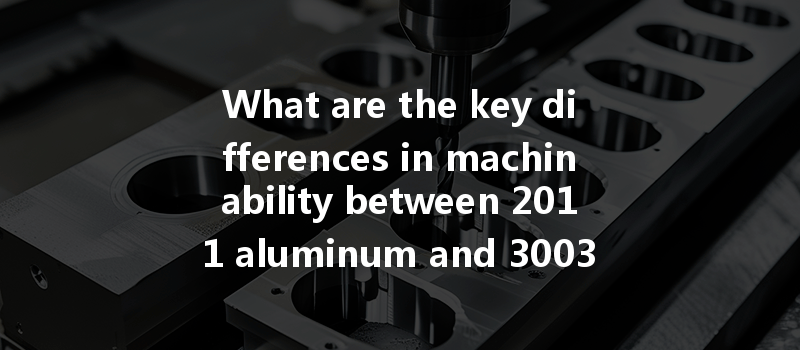Opening: An Interesting Fact to Draw You In
Did you know that aluminum is one of the most widely used metals in the world? With its lightweight, corrosion resistance, and excellent machinability, it accounts for around 30% of all metal production globally. Among the various aluminum alloys, 2011 and 3003 are particularly noteworthy for their distinct compositions, properties, and applications. But what exactly sets these two alloys apart in terms of their machinability, particularly in the realm of CNC machining?
Content: A Detailed Exploration of Machinability in CNC Machining
Aluminum alloys play a pivotal role in industries ranging from aerospace to automotive, and the choice of which alloy to use can significantly impact production efficiency, quality, and cost-effectiveness. This blog delves into the specific differences in machinability between 2011 and 3003 aluminum, examining why these distinctions are vital for manufacturers and engineers alike.
Overview of 2011 and 3003 Aluminum Alloys
2011 Aluminum Alloy
2011 aluminum is known as one of the most machinable aluminum alloys. It is primarily composed of aluminum (90.7% to 94.7%), with a significant addition of lead (0.1% to 0.5%) and copper (4.0% to 5.0%). These elements enhance its machinability but can impede the alloy’s corrosion resistance.
3003 Aluminum Alloy
In contrast, 3003 aluminum is a non-heat-treatable alloy composed mainly of aluminum with a small percentage of manganese (1.0% to 1.5%). While it does not boast the same level of machinability as 2011, it offers better corrosion resistance and formability.
Machinability Comparison

2.1 Chip Formation
One of the primary factors influencing machinability is the type of chips produced during cutting. 2011 aluminum generally produces shorter, smaller chips compared to 3003, which can lead to fewer chip-related problems, such as jamming and interference in CNC machining operations.
2.2 Cutting Speed
In terms of cutting speed, 2011 can often be machined at higher speeds than 3003 due to its superior flow properties and reduced cutting forces. This ability to run at faster speeds contributes significantly to higher productivity rates and lower machining costs in production operations.
2.3 Tool Wear
Tool wear is another critical consideration in CNC machining. The lead content in 2011 aluminum tends to create a lubricating effect, which can reduce tool wear and extend tool life. Conversely, tooling used for machining 3003 aluminum may wear out faster due to the material’s lower machinability.
Process Recommendations
Given the differences in machinability between 2011 and 3003 aluminum, manufacturers must make careful selections in their machining processes to ensure optimal outcomes.
3.1 Recommended Cutting Tools
3.2 Cutting Fluid Usage
Using cutting fluids can enhance the overall machining process for both alloys, but especially for 3003:
Practical Applications
Understanding the differences in machinability between these two alloys plays a crucial role in applications where precision and performance are critical. For aerospace components and automotive housings, selecting 2011 aluminum is likely to yield better results due to its machining efficiency.
On the other hand, for applications requiring better corrosion resistance and weldability, such as food processing equipment, 3003 is the better choice despite its machining limitations.
: Why This Matters
To summarize, the differences in machinability between 2011 and 3003 aluminum alloys can significantly influence the choice of materials for specific applications. Understanding the unique properties and machining characteristics of each alloy empowers manufacturers to select the right materials and processes, leading to increased productivity, reduced costs, and improved product quality.
As the demand for lightweight, corrosion-resistant materials continues to grow, understanding these factors in aluminum alloy machining will only become more pivotal. Choosing the right aluminum alloy based on machinability can make all the difference in today’s competitive manufacturing landscape.
Incorporating this knowledge into your CNC machining practices not only supports improved efficiency but also ensures alignment with industry standards and customer expectations. Take it as a strategic imperative to engage with the nuances of machining these alloys — your bottom line may thank you for it!
—
By following these guidelines and leveraging the inherent strengths of 2011 and 3003 aluminum, manufacturers can optimize their operations and advance their technological capabilities, ultimately positioning themselves for success in an ever-evolving marketplace.






